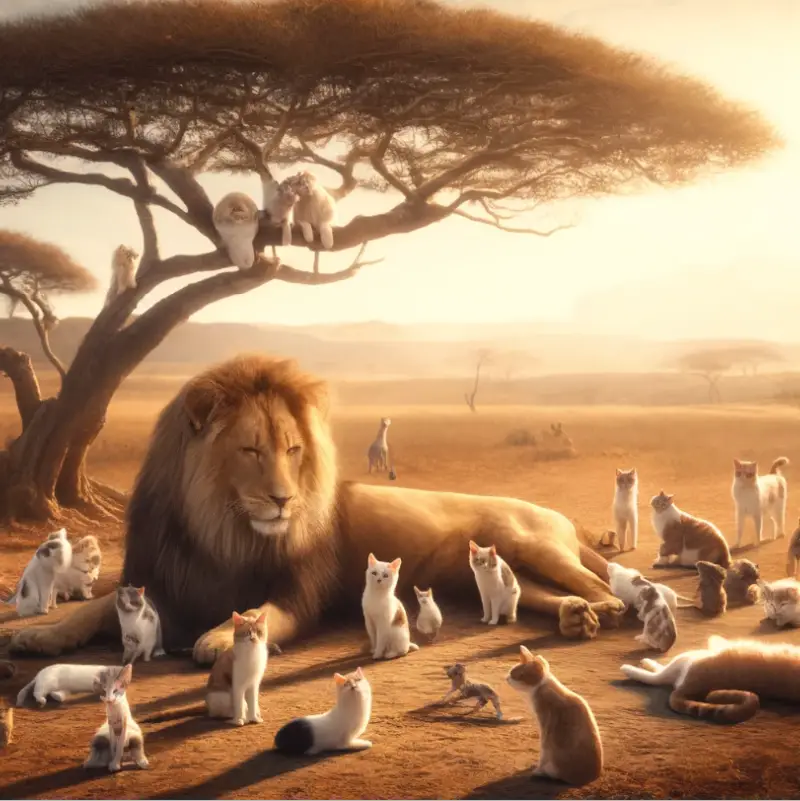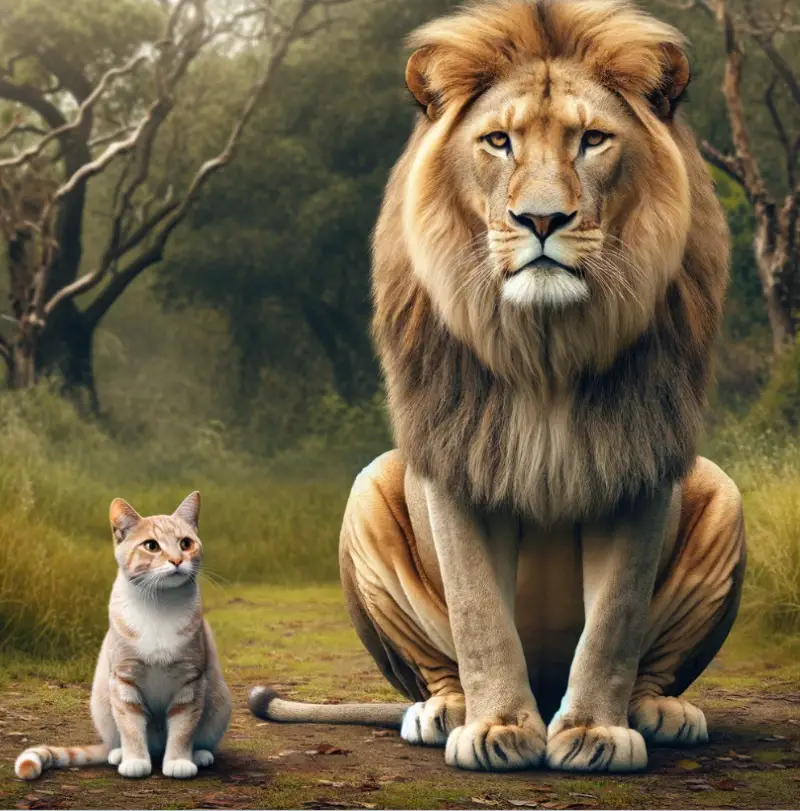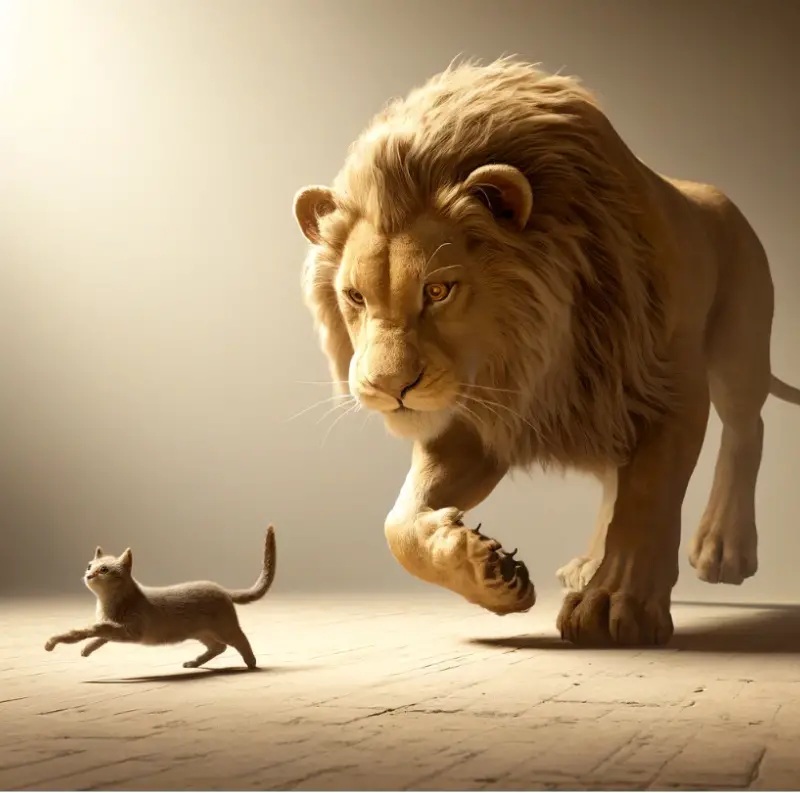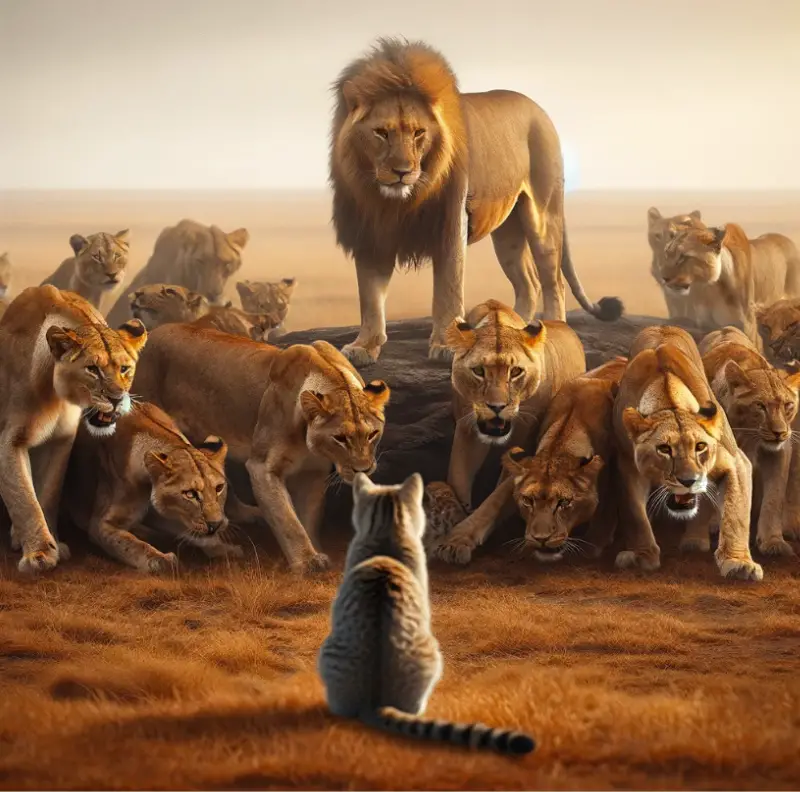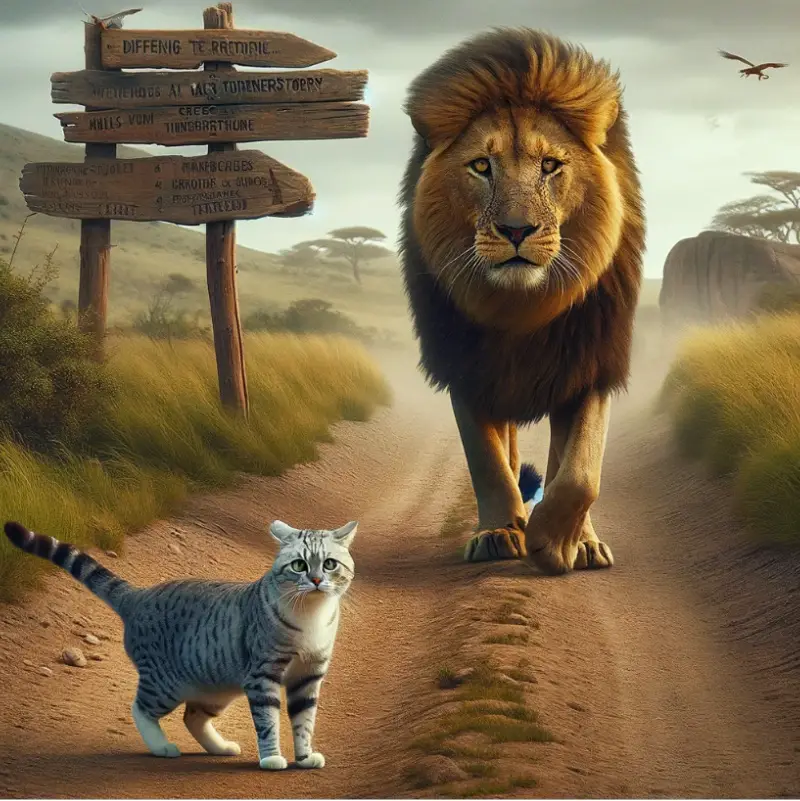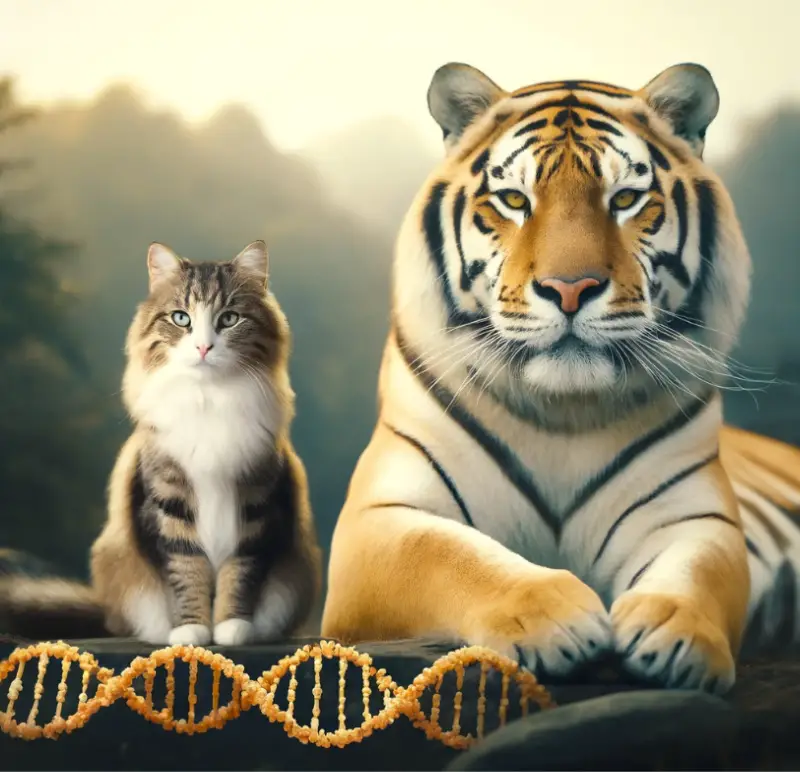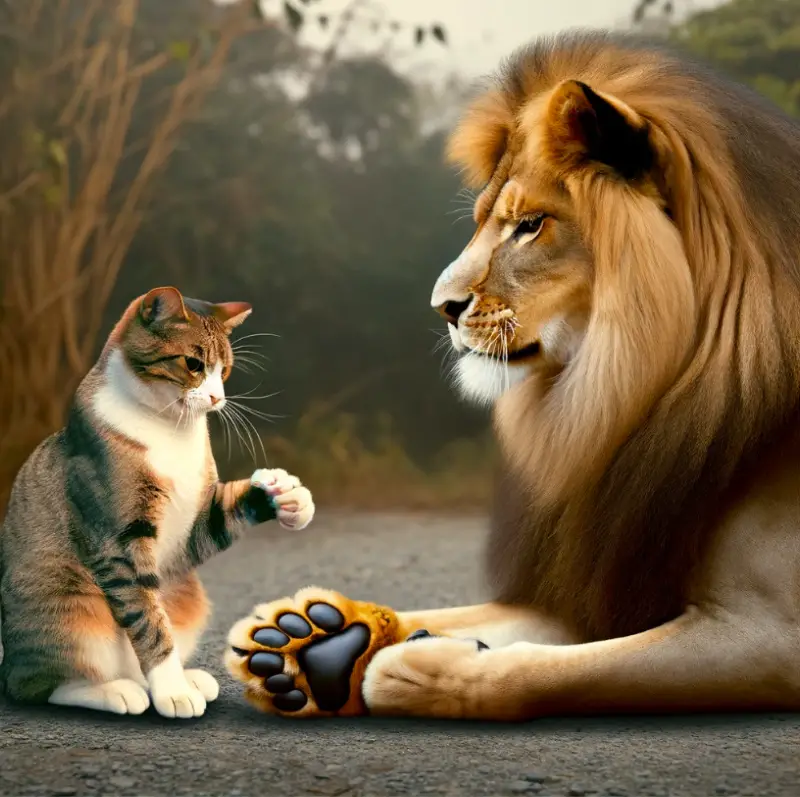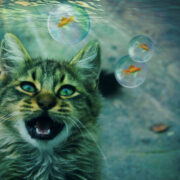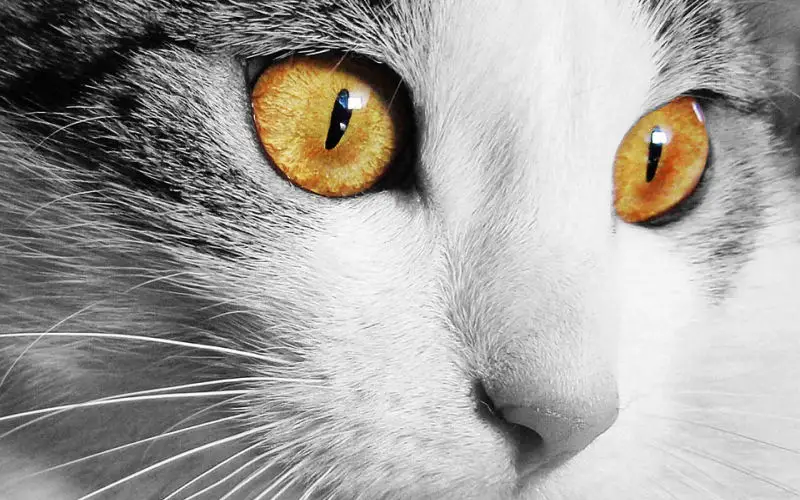The idea of domestic cats hanging out with wild cats like lions or tigers is fascinating, but it also brings up a lot of questions. Our household pets, known for their playful antics and cuddly moments, are a lot smaller and less wild than their big cat cousins.
This makes us wonder what would happen if they ever crossed paths. Would they get along, or would it be risky? What do you think?
We’ll explore whether these majestic wild cats could ever see our smaller, tamer felines as friends, not food, and what their natural instincts might tell us about the possibility of them sharing space. This peek into the lives of cats big and small helps us understand more about their world and ours.
Turns out that our beloved domestic cats sharing a space with wild cats like lions would not be safe, primarily due to significant differences in size, behavior, and natural instincts. While domestic cats (Felis catus) and lions (Panthera leo) share a common ancestry and exhibit some similar behaviors, the differences between them are profound and critical for understanding their interactions.
Size and Strength
Lions are among the largest predators in the cat family, with males weighing up to 250 kg (550 lbs) or more. In contrast, domestic cats usually weigh between 4 to 5 kg (8.8 to 11 lbs), making them extremely vulnerable to injury or death from a lion, even if the larger cat’s intentions are playful rather than predatory.
Predatory Behavior
Lions are apex predators with strong hunting instincts. They may view smaller animals, including domestic cats, as prey. While domestic cats also have hunting instincts, their prey is typically much smaller, such as birds and rodents. A lion’s natural instinct might compel it to chase and potentially harm a smaller cat if given the opportunity.
Social Structure
Lions have a unique social structure among big cats; they live in groups called prides. This social behavior involves complex interactions and communication that domestic cats are not equipped to understand or participate in. Additionally, lions use physical power to establish and maintain social hierarchy within their prides, which could be dangerous for a domestic cat.
Territorial Nature
Both lions and domestic cats are territorial, but the way they manage their territories and the scale of those territories differ significantly. A domestic cat might attempt to assert territorial behavior in ways that could provoke aggressive responses from a lion, not understanding the vast difference in their power and social cues.
Disease Transmission
There’s also the risk of disease transmission between domestic cats and wild lions. While some diseases are species-specific, others can be transmitted between different species of cats, posing health risks to both parties.
In controlled environments like zoos or wildlife sanctuaries, where barriers and strict management practices are in place, the safety of different species can be ensured. However, in a hypothetical scenario where a domestic cat is directly exposed to a lion without such controls, the safety of the domestic cat would be significantly compromised.
It’s crucial for the well-being of all animals involved that wild and domestic species are kept separate, respecting their natural behaviors and needs. Direct interactions between domestic cats and lions, or any large wild cats, are not safe and should be avoided to prevent harm.
The DNA of domestic cats (Felis catus) and that of larger wild cats, such as lions (Panthera leo) and tigers (Panthera tigris), share a significant amount of similarity, reflecting their shared ancestry within the Felidae family. Research has shown that domestic cats share more than 95% of their DNA with tigers, for instance. This high degree of genetic similarity is indicative of the evolutionary relationships between domestic cats and their wild relatives.
Despite these genetic similarities, there are important differences that distinguish domestic cats from their larger cousins. These include variations in gene sequences that influence size, fur patterns, and behaviors suited to their respective environments. For example, the genes responsible for the domestic cat’s smaller size or its ability to live in close quarters with humans have diverged from those of larger wild cats, who have evolved to thrive in different types of habitats.
Additionally, domestication has led to changes in the genome of domestic cats that are not found in wild cats, including those related to tameness and dietary adaptations.
Summary
While they share an ancestral lineage, the evolutionary paths of domestic cats and large wild cats like lions and tigers have led to the diverse species we see today, each adapted to its unique way of life. For more information check out our article: “Are House Cats Wilder Than We Think?“
